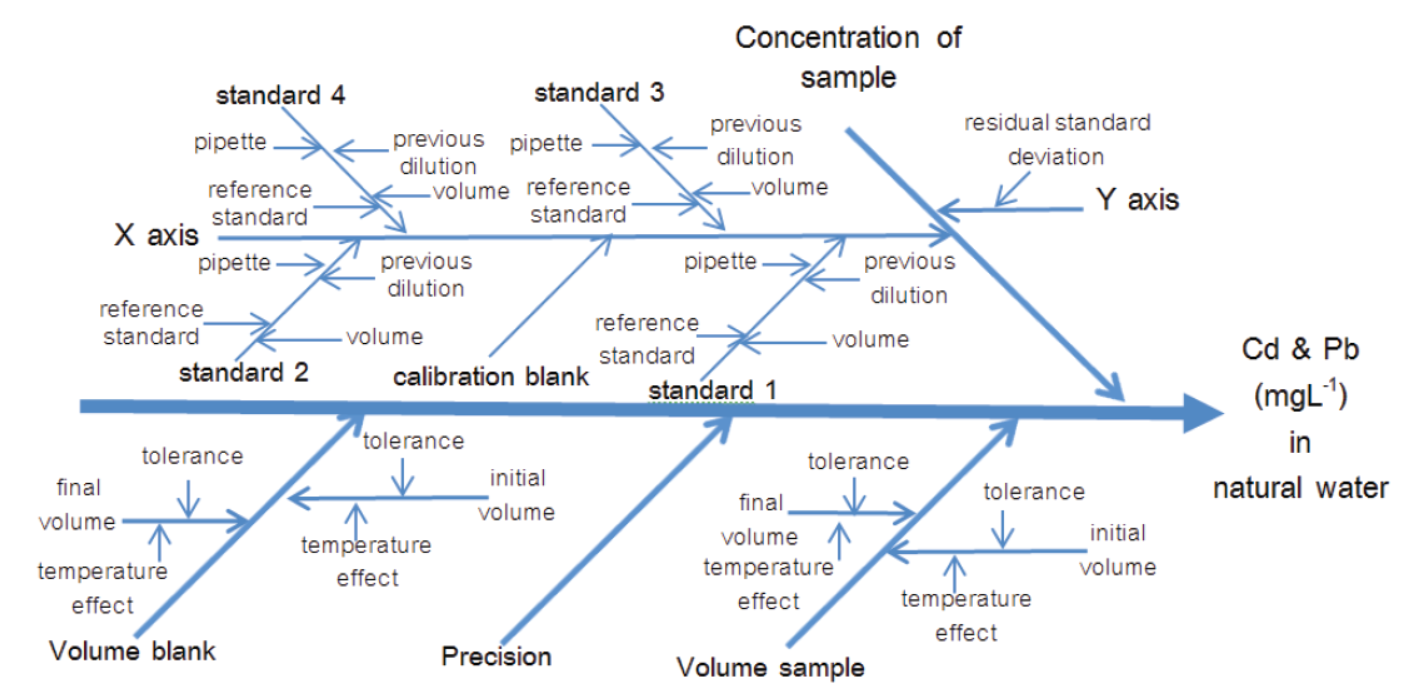Method validation for determination of lead and cadmium in natural water using flame atomic absorption spectrometry (FAAS)
DOI:
https://doi.org/10.60136/bas.v1.2012.173Keywords:
Cadmium, Flame atomic absorption spectrometry, Lead, Natural waterAbstract
The method validation for determination of lead and cadmium in natural water, i.e. deep well water, rain and river water was investigated by flame atomic absorption spectrometry using the modified method based on AWWA 21st Ed., 2005 prior to the use in routine work. The characteristics of the method showed that the linear range of lead (Pb) and cadmium (Cd) were 0.1 – 1.5 mgL-1 and 0.02 -0.5 mgL-1, the detection limits were 0.02 and 0.005 mgL-1, and the limits of quantitation were 0.1 mgL-1 and 0.02 mgL-1, respectively. Percentage recovery of lead and cadmium were 91-110% and 98-105% respectively. Relative standard deviations for both elements were between 0.8-3.2. The percentage recovery and relative standard deviation were within acceptance limit. In addition, the percentage measurement uncertainties at 95% confidence level of cadmium and lead were less than 15% throughout concentrations of working range that subjected to the target uncertainty. Therefore, this validated method was fit for the intended use.
References
Soisungwan, S., Jason, R.B., Supanee, U., Melissa, H.E., Paul, E.B.R., David, J.W. and Michael, R.M. “A global perspective on cadmium pollution and toxicity in non-occupationally exposed population.” Toxicology Letters, 2003, 137(1-2): 65-83.
Eduardo, C., Jussara, W.T. and Mauro S. “A new method of microvolume back-extraction procedure for enrichment of Pb and Cd and determination by flame atomic absorption spectrometry.” Talanta, 2002, 56(1): 185-191.
Mehmet, Y., Yusuf, D. and Seref, G. “Speciation of lead in soils and relation with its concentration in fruits.” Analytica Chimica Acta, 2000, 410(1–2): 119.
Yusuf, A.A., Arowolo T.A. and Bamgbose, O. “Cadmium, copper and nickel levels in vegetables from industrial and residential areas of Lagos City Nigeria.” Food and Chemical Toxicology, 2003, 41(3): 375-378.
McLaughlin, M.J., Parker, D.R. and Clarke, J.M. “Metals and micronutrients – food safety issues." Field Crops Research, 1999, 60(1–2): 143-163.
EURACHEM Working Group. 1998. “The Fitness for Purpose of Analytical Methods A Laboratory Guide to Method Validation and Related Topics", LGC (Teddington) Ltd.
American Public Health Association. 3111 metals by flame atomic absorption spectrometry. Standard methods for the examination of water and waste water. APHA, 21st ed., Washington DC:APHP, 2005, 3-13.
International Organization for Standardization, “Guide to Expression of Uncertainty in measurement”, ISO, Geneva, 1995, ISBN 92-67-10188-9.
Notification of the National Environmental Board, No. 8, B.E. 2537 (1994), issued under the Enhancement and Conservation of National Environmental Quality Act B.E.2535 (1992), published in the Royal Government Gazette, Vol. 111, Part 16, dated February 24, B.E.2537 (1994).

Downloads
Published
How to Cite
Issue
Section
License
Copyright (c) 2012 Bulletin of Applied Sciences

This work is licensed under a Creative Commons Attribution-NonCommercial-NoDerivatives 4.0 International License.









